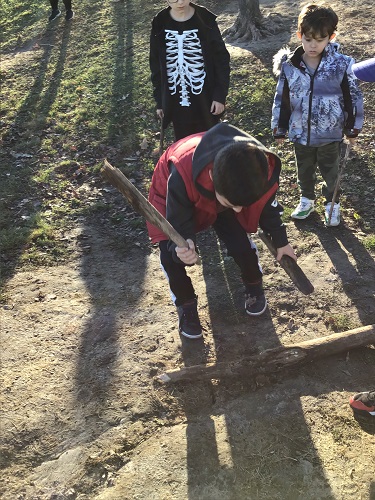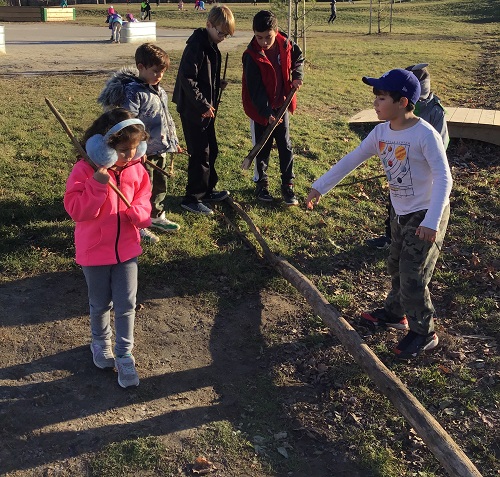The fact that children take their creativity to whole other level and most of the time, turn the activity on hand into a direction the educators might not have expected, was proved more prominent through this activity than any other we’ve done. As the children had been asking to bring in the sticks they found outside, we kept delaying it till we planned an activity where they could use the sticks to make something that they could bring home. This time, we finally decided to make wind chimes or paint sticks to turn them into whatever the children want and asked them to pick one stick each that they wanted to bring inside to decorate. The children got on straight away to find the sticks they liked and while engaged in the process, they found a big long log which most of the children thought was wide enough for their liking. They immediately started discussing as a team and debating on what they could do to break the log into pieces. After problem solving for a while, they started working on their plan and Leo asked Ignacio to put pressure on end of the log while he jumped on the other end to try and break it off and he successfully did so. Adelina and another friend problem solved and thought that they could use a different stick to saw on the log which might help them break it, only to realize that it only scraped the log but there was no chance of success in breaking it. Later, another child grabbed a thicker small stick and called it their baseball bat and started to hit the log in hopes for it break. Ignacio tried some more luck by lifting the stick up and throwing it onto the ground. Apart from all this, some friends were super into trying to balance on the log. Later as we came in, some children painted their sticks different patterns and asked to take it home instead of using them to make anything while some children painted their sticks to pretend it to be a flute and made different sounds, pretending to be a musician.
Environments is often said to be the third teacher and it becomes much more prominent and obvious as we see children interacting and playing outdoors on their own. Supporting this statement, ‘How does Learning Happen’ says “Children thrive in indoor and outdoor spaces that invite them to investigate, imagine, think, create solve problems, and make meaning from their experiences - especially when the spaces contain interesting and complex ended materials that children can use in many ways”. Research also suggests that “connecting to the natural world contributes to children’s mental, physical, emotional and spiritual health and well-being. Providing daily opportunities explore, care for and interact with the natural world helps to strengthen these connections” (HDLH).











